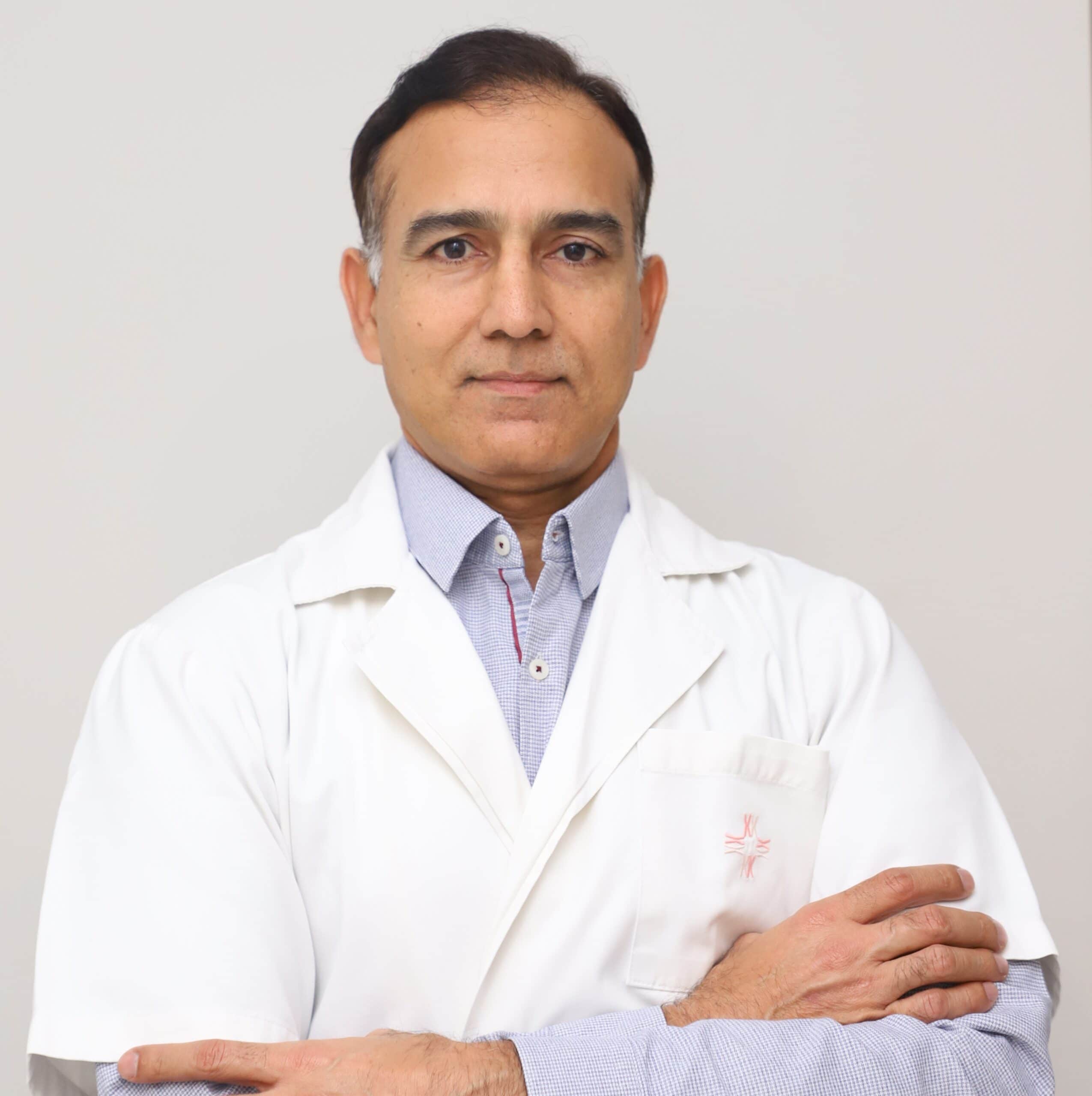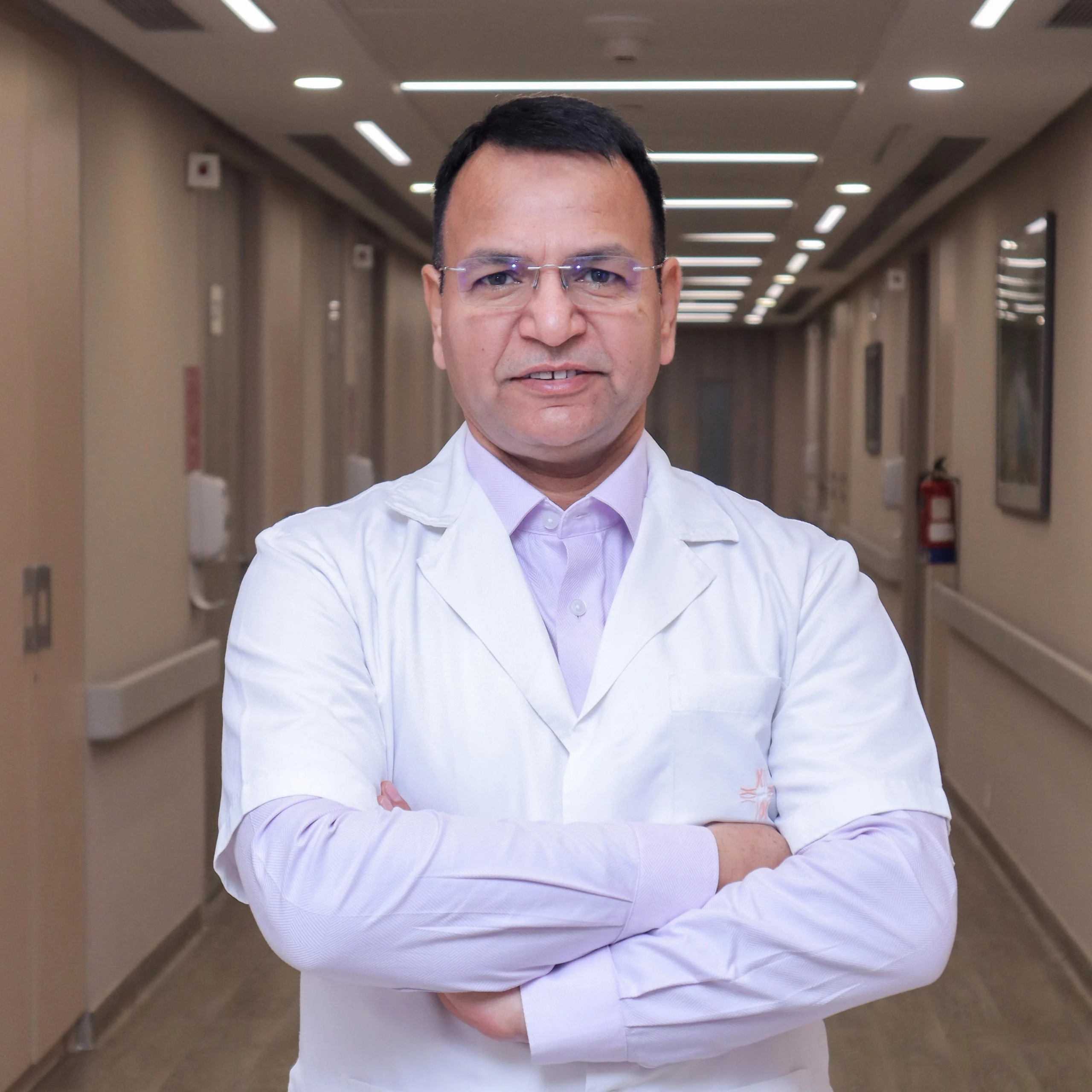- Home
- /
- Speciality
- /
- Spinal Deformity: Causes, Symptoms, Diagnosis & Treatment
The spine, commonly known as the backbone, is a bony structure that supports the body. It is made up of nerves, bones, muscles, tendons, and other tissues. Naturally, a healthy spine makes an S-shape with three curves and extends from the neck/head bone to the lower back. The spine plays a key role in maintaining the right posture by supporting the body. Spinal deformity is a condition where the spine has an unusual shape or abnormal alignment. The spine's rotation or curvature may be affected by this unusual alignment or shape. Birth defects, injuries, spine surgery, and ageing can all result in spinal deformities. In addition to these, an inactive lifestyle is a significant contributing factor to the increase in cases of spinal deformities. Obesity puts extra strain on the spine, sitting for extended periods of time can cause curvature problems, and a lack of exercise weakens the back and core muscles and eventually causes pain. An inactive way of living deteriorates bone health and weakens the muscles that support the spine. Individuals suffering from spinal deformity may notice changes in their physical appearance such as a curved spine or uneven shoulders as well as pain in their neck, lower back or back. They may also experience a decrease in their flexibility and have issues bending or standing for extended periods. Given the important role the spine plays, any abnormalities can have emotional and psychological effects.
Types of Spinal Deformity
Spinal deformities are issues with curvature or rotation of the spine, some common types of spinal deformities include,
Scoliosis
This condition causes the spine to curve laterally or sideways. The spine appears to have left or right curvatures when viewed from the front. Scoliosis is frequently observed in adults as a result of spinal degeneration. Scoliosis occurs when the facet joints which enable the spine to bend and twist deteriorate with age. A tilted waist, uneven shoulders, and asymmetrical hips are all symptoms of scoliosis.Kyphosis
Kyphosis is defined by a forward curvature of the upper backbone/spine. The upper back curving forward causes a hump to form and is often caused by poor posture. People with kyphosis have trouble standing up straight, develop a hunchback and may experience chronic back pain. When the spinal bones weaken the upper spinal bones may compress or crack leading to this condition in older adults.Lordosis
When the lower spine and neck develop an excessive inward curvature it is called Lordosis. This inward curve causes the stomach to stick out, creating a backward-leaning appearance. Lordosis is common among old age people and pregnant women. Individuals suffering from lordosis suffer from lower back aches, difficulty lying back flat, etc.Importance of Early Diagnosis and Management
The proverb ‘an ounce of prevention is worth a pound of cure’ applies to the diagnosis and management of spinal deformities. Since the spine is the main support structure of the body, identifying even the smallest change and treating the symptoms can help prevent further complications, enhance quality of life, and reduce the need for invasive treatment.
The proverb ‘an ounce of prevention is worth a pound of cure’ applies to the diagnosis and management of spinal deformities. Since the spine is the main support structure of the body, identifying even the smallest change and treating the symptoms can help prevent further complications, enhance quality of life, and reduce the need for invasive treatment.
|
Benefit |
Reasoning |
|
Prevents Progression |
Early intervention can stop the deformity from worsening |
|
Reduces Pain |
Treating early helps alleviate discomfort & prevent chronic pain |
|
Preserves Mobility |
Timely management maintains flexibility & daily function |
|
Avoids Complications |
Reduces risks like nerve damage, breathing issues & organ problem |
|
Enhances Appearance |
Correcting the deformity early can prevent visible changes |
|
Reduces Surgery Needs |
Non-invasive treatments can avoid or delay the need for surgery |
Causes of Spinal Deformities
Spinal deformities are conditions related to the misalignment or abnormal curve of the spine. The abnormalities can arise at birth, during growth, in old age, or as a result of trauma. While some deformities may cause pain and discomfort without any obvious symptoms others may exhibit obvious symptoms. Some of the common causes of spinal deformities include,
Trauma: Any serious injury or accident to the spine may result in spinal misalignment. The deformity can result from injuries like a fracture or a dislocated spine. Aging: As we age the bones in our spines begin to compress or crack as a result of wear and tear and other changes take place leading to a variety of spinal deformities. Congenital Factors: There are spinal deformities present during the birth. It is a condition when the spine or any part of it may not fully develop. Tumours: Spinal tumours, whether malignant or benign, can affect the spinal cord, nerves, and other parts of the spine and can result in spinal deformity if left untreated. Postural Issues: Poor posture can cause improper spine alignment, and strain the surrounding muscles, ligaments, and joints leading to deformity. Postural issues gradually develop and lead to significant problems with the spine.Neuromuscular conditions, prior surgery, infection or inflammatory spinal diseases, genetic factors, etc. may also lead to spinal deformities.
Symptoms of Spinal Deformities
Symptoms of spinal deformity can vary depending on the type, severity, and location of the curvature. Some symptoms can be asymptomatic in the beginning while others have noticeable changes & discomfort. Common symptoms of spinal deformities include,
| Symptoms | Description |
| Visible Curvature | Abnormal alignment of the spine, such as a hump, sideways curve, or an exaggerated forward bend |
| Uneven Shoulders/Hips | One shoulder or hip may appear higher than the other due to the curvature |
| Back Pain | Persistent or recurring pain in the back, neck, or lower spine due to strain |
| Reduced Flexibility | Stiffness in the spine, limiting the ability to bend or twist |
| Difficulty Standing | A feeling of imbalance or trouble maintaining an upright posture |
| Muscle Fatigue | Tiredness or strain in the back and surrounding muscles from compensating for poor spinal alignment. |
Diagnosing Spinal Deformities
A specialist examines the patient thoroughly, notes the condition of the spine and suggests diagnostic tests to look for any abnormalities. MRI: Gives a detailed image of the soft tissue discs & nerves. CT Scan: Helps create a two-dimensional picture of the spine. X-ray: Aids in determining spine anomalies or curvature.
Treatment Options for Spinal Deformities
The treatment of spinal deformities depends on the type, severity, and age of the patients. Spinal deformity treatment can range from non-invasive methods to surgical methods.
Non-Surgical Treatments
Non-surgical treatments are suggested for patients with mild symptoms. These include,
- Physical therapy: These involve exercises to strengthen the core and back muscles, and help with enhancing posture and flexibility.
- Bracing: Wearing a brace helps with abnormal curvature of the spine, this is especially effective with children.
- Lifestyle modifications:Maintaining a correct posture, regularly exercising, and avoiding activities that add strain to the spine can help with treating the deformities.
- Alternative therapies: Therapies like chiropractic or acupuncture can be used to manage pain and release stress around the spine & surrounding muscles.
- Medications: Prescribed medicines and muscle relaxants can help reduce pain and discomfort.
Surgical Treatments
The type of deformity and the severity of the symptoms determine whether surgery is necessary. When non-surgical treatments are not enough to treat deformities like progressive deformity, neurological symptoms, trauma, tumours, spinal instability, and other severe conditions, surgical procedures are the preferred course of action. Surgery such as osteotomy, decompression surgery, and fusion surgery are among the procedures used to treat deformities surgically.
Preventing Spinal Deformities
There are multiple factors that affect the health of the spine. While proactive measures can be used to treat or manage spinal deformities resulting from degenerative conditions or postural issues they cannot be used to treat deformities caused by congenital or genetic factors. Key preventive measures that help maintain a healthy spine include,
| Measures | Descriptions |
| Maintain Good Posture | Practice proper posture while sitting, standing & walking |
| Weight Management | Maintain a healthy weight to reduce stress on the spine |
| Regular Exercise | To strengthen core muscles & support spinal alignment |
| Routine Screening | Regular check-ups to identify early signs or other deformities |
| Prevention of Injuries | Use protective gear during sports & activities |
Meet Our Spine Surgeons
Be a super-mom, stay informed about pregnancy health updates with our weekly newsletter
[contact-form-7 id=”16292″ title=”Subscribe”]
FAQ's about Spinal Deformity
What do you mean by spinal curvature deformities?
Spinal curvature deformity is a condition related to rotation or abnormal curve of the spine. The common types of spinal curvature deformities are scoliosis, kyphosis, and lordosis.
What are the three types of spinal deformities?
The three types of spinal deformities are scoliosis, kyphosis, and lordosis.
What are spinal deformities?
Spinal deformity is a condition where the spine has an unusual shape or abnormal alignment. The spine’s rotation or curvature may be affected by this unusual alignment or shape.




